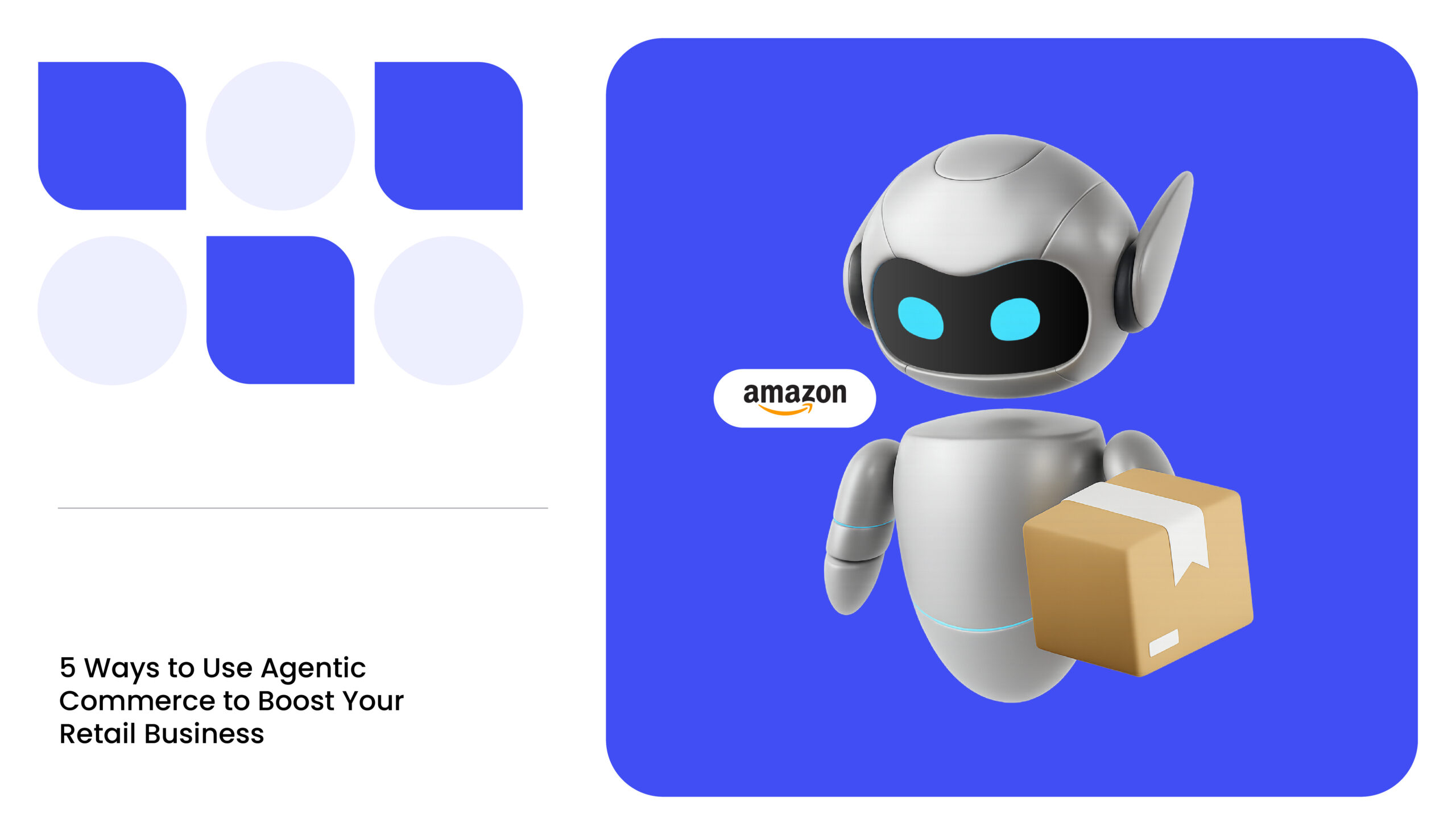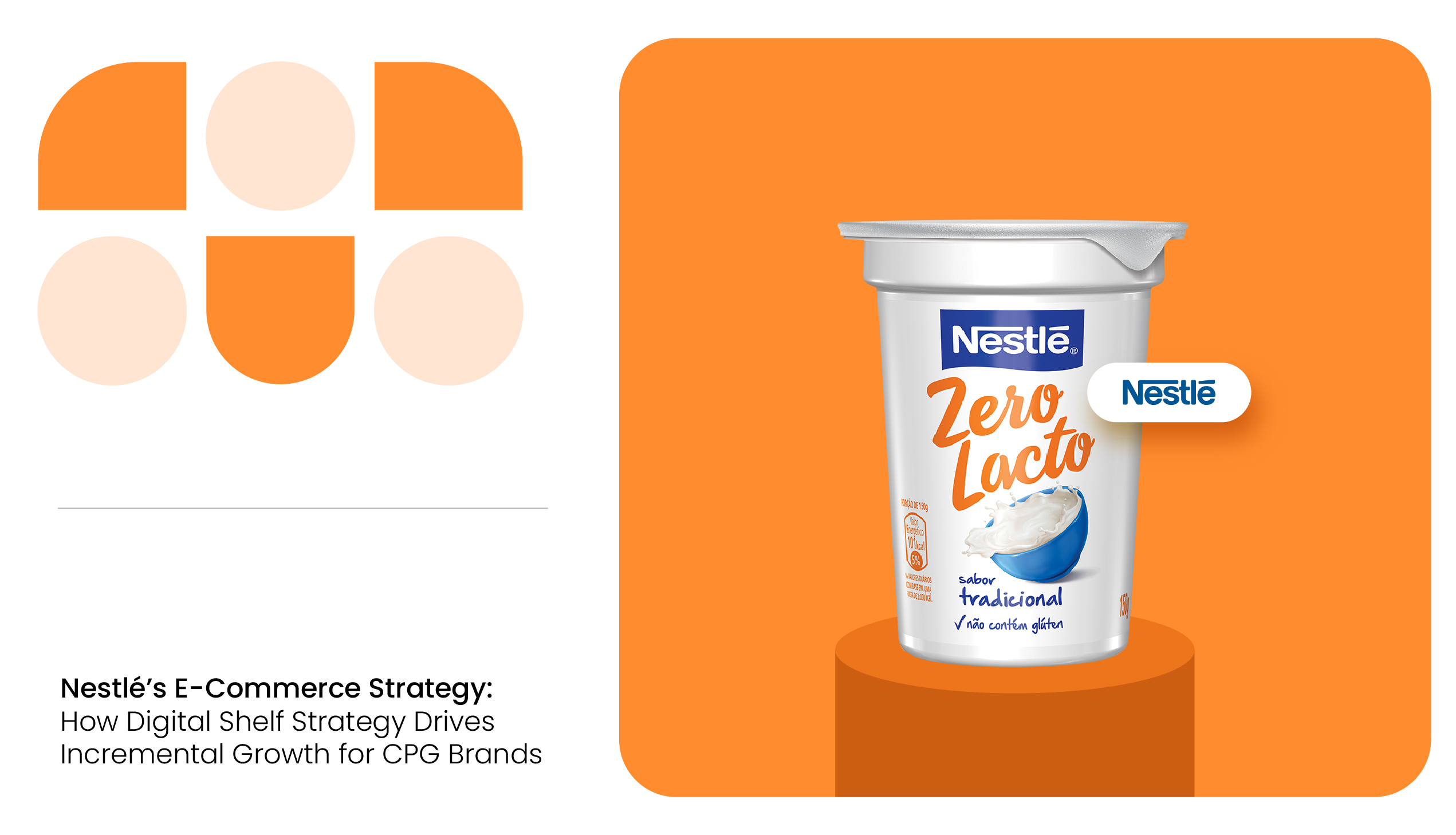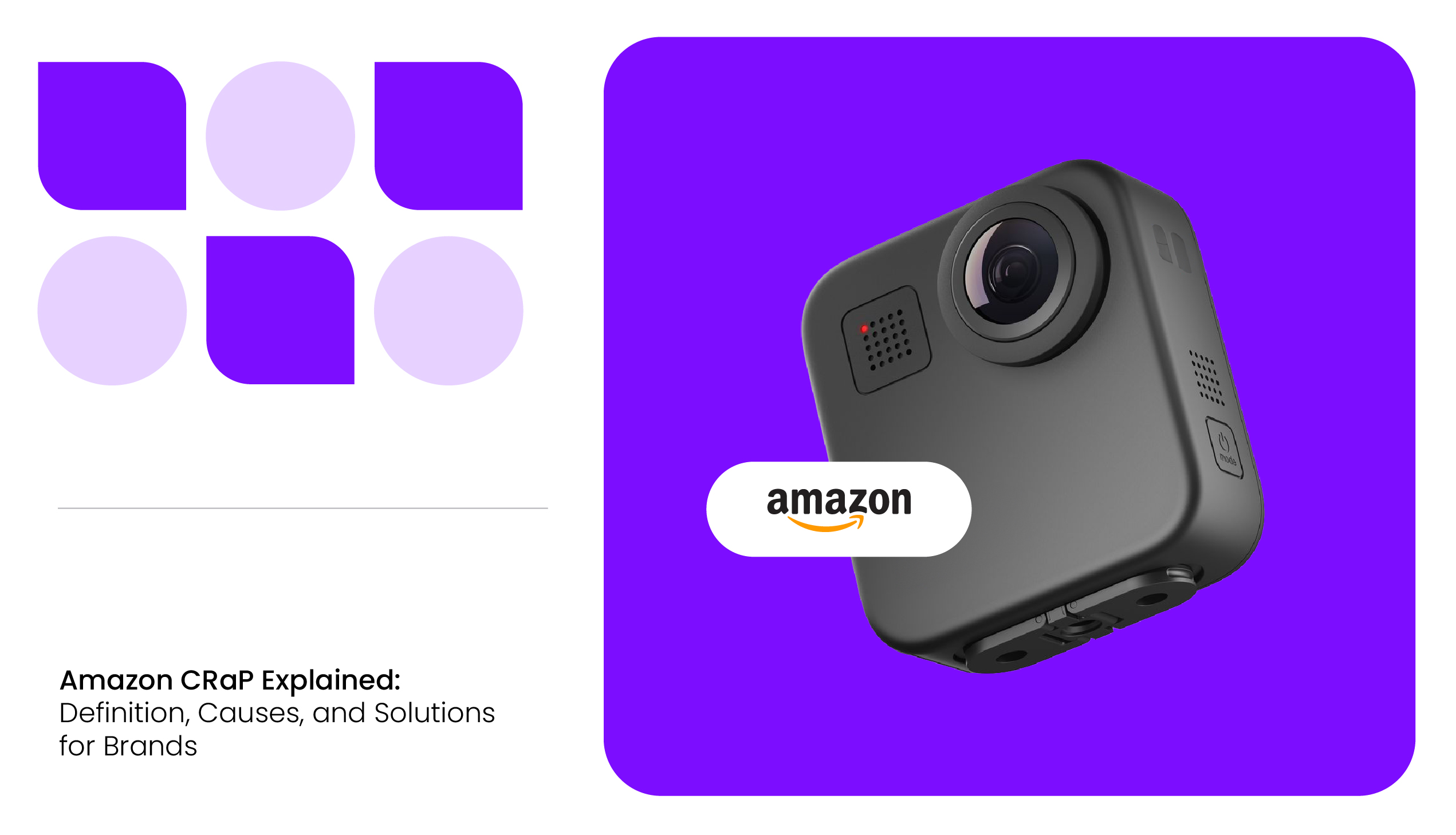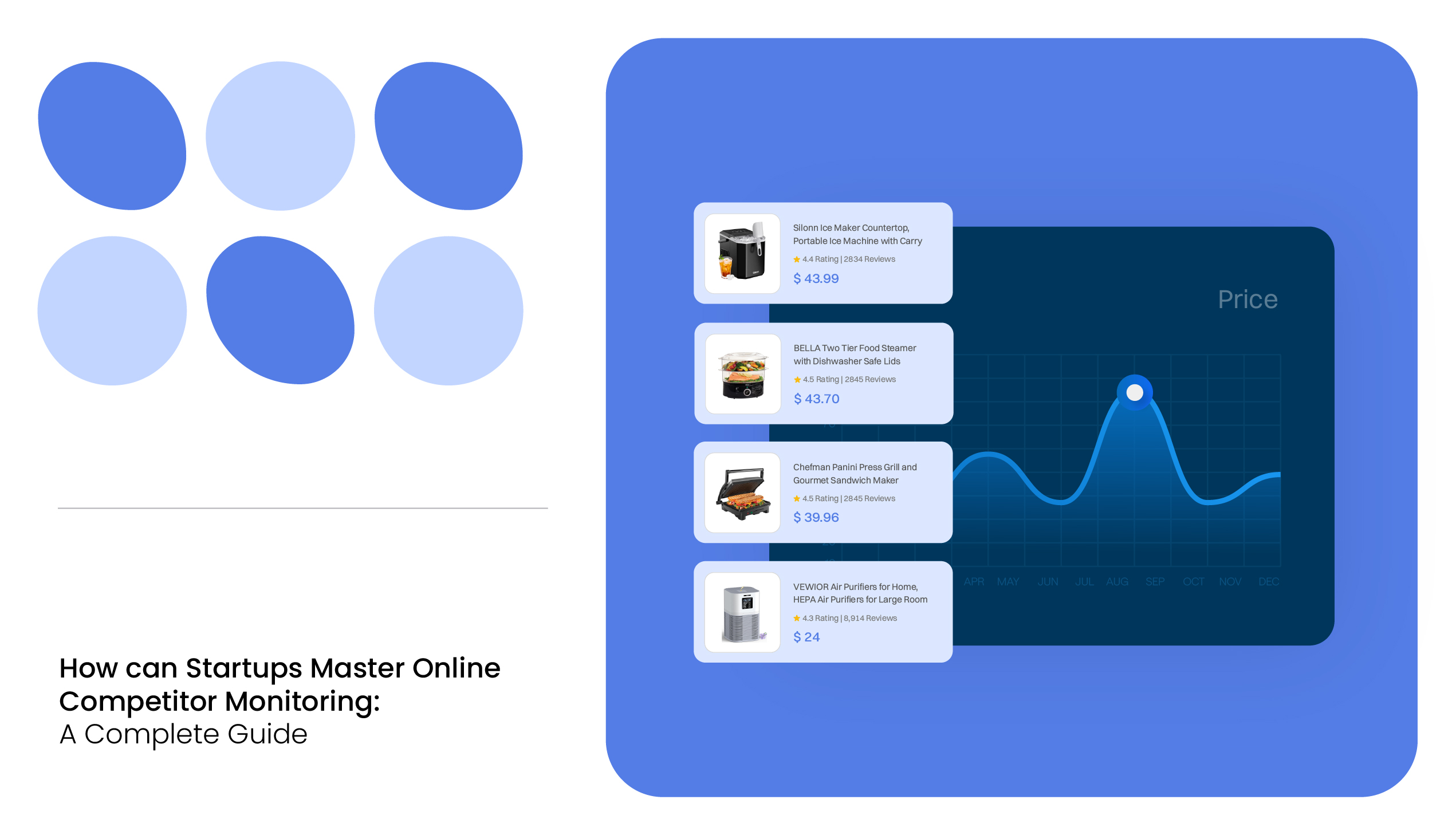Amazon just launched “Buy for Me” in its shopping app, marking its entry into agentic commerce. If users can’t find what they want among its already listed 600 million products, the app searches other websites and completes the purchase on their behalf.
It’s amazing from a shopper’s point of view. For brands and retailers, it’s opening a new path to show and sell their products. But is automated shopping the full extent of agentic commerce, or does it have more to offer?
In this article, we’ll break down what is agentic commerce, how it works, and 5 ways you can use it to strengthen your retail business.
What is Agentic Commerce and How it Works
Agentic commerce refers to the e-commerce model where AI agents take on the role of the shopper, performing every step of the buying journey on behalf of the customer. This includes discovering products, comparing options, making purchases, tracking shipments, and handling returns.
Unlike traditional e-commerce, where shoppers do all the work, agentic commerce shifts the majority of shopping responsibility to AI. These autonomous shopping agents use data from a customer’s past purchases and browsing history to understand what they need. Based on this, they search across catalogs, evaluate products, and either make the purchase or recommend the best options. The goal is to make shopping faster, easier, and more personalized.
On the 26th episode of the Digital Shelf Insider podcast, Anil Gandharve, CEO of Genrise.ai, put it best:
“An AI assistant is typically a piece of software that is waiting for an instruction from a user. However, an agent is someone who is working without necessarily waiting for an instruction.”
How to Use Agentic Commerce in Your Retail Business
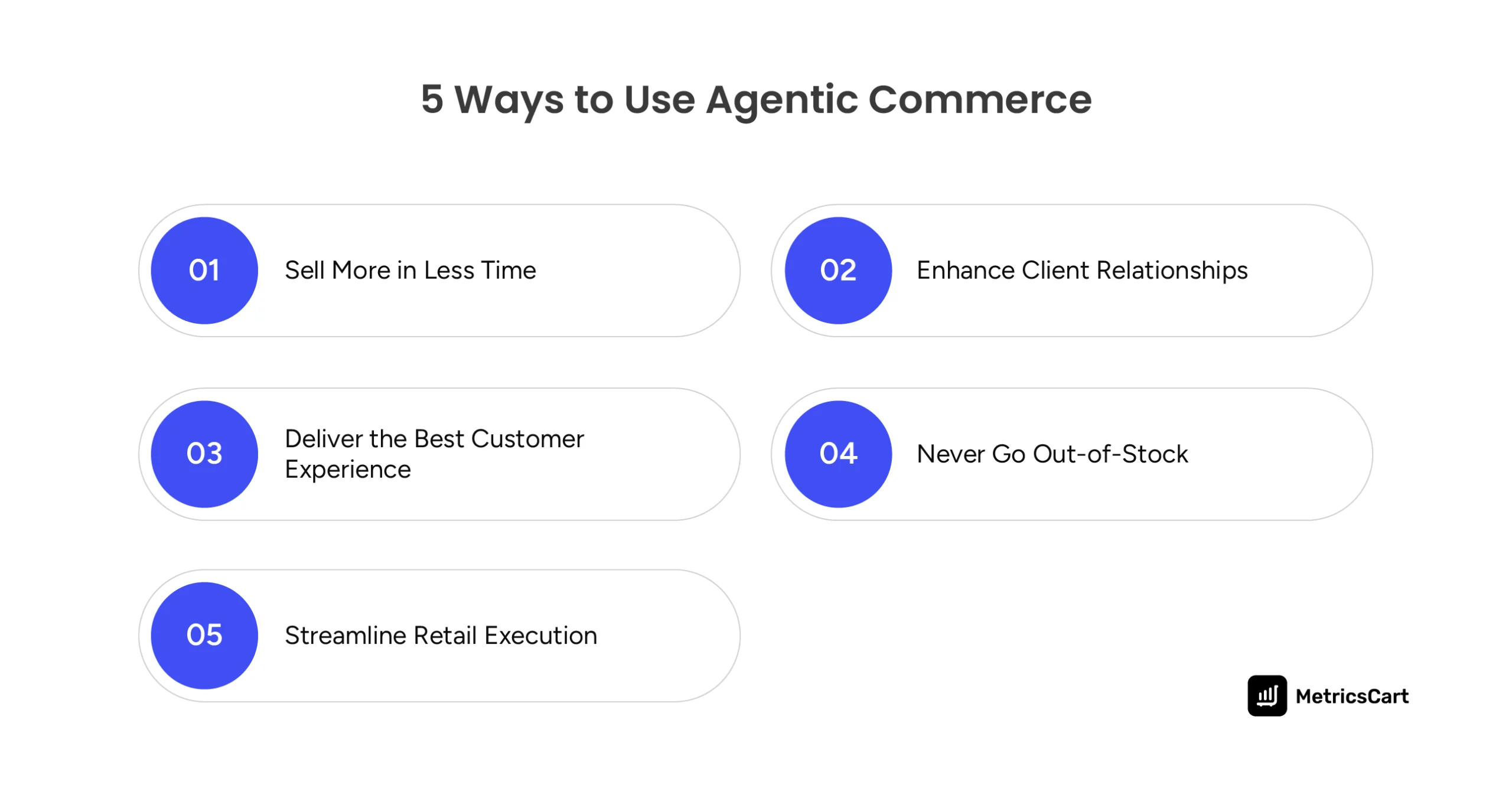
While the core idea of agentic commerce remains in enabling shoppers to make faster buying decisions, its use case is not limited to it. Here are 5 ways you can put agentic commerce to work for your business.
Sell More in Less Time
Product discovery is often the longest process for a shopper. The endless search, scroll, and comparisons take days or even weeks. Sometimes, they may even drop the intent midway because of the hassle of finding the right match. According to Statista, cart abandonment in the US reached 70.19%, with product discovery issues being a key factor.
Agentic commerce collapses this gap.
AI agents don’t do doom browsing. They act with intent. If a product listing fits their user’s preferences and is available, they will buy it instantly. For brands, this is a major opportunity to increase conversion rates without spending more on advertising. All you need is a well-optimized product listing that the machine can easily comprehend.

Listen to the exclusive insights from Anil Gandharve:
That means your product data, such as titles, descriptions, specifications, dimensions, images, availability, and pricing, must be formatted in a way that allows AI to parse and trust it instantly.
Use advanced content compliance monitoring tools, such as MetricsCart, to identify gaps and optimize your product listings across all retail platforms.

READ MORE | Why Content Compliance Matters on Product Detail Pages?
Enhance Client Relationships
When you’re managing high-value clients or strategic accounts, depth and consistency are everything. But with so much data spread across emails, dashboards, order histories, and scattered tools, it’s hard to stay truly proactive.
Agentic commerce makes it possible to deliver white-glove service at scale. You can build key account agents to
- Monitor client health
- Review purchase trends
- Track fulfillment patterns, and
- Flag any deviations from existing agreements.
These agents become your account team’s second brain that constantly scans for gaps, risks, and opportunities.
For instance, if a key client’s purchase frequency is dropping or a specific SKU hasn’t been reordered in weeks, the agent can flag it and recommend a course of action, such as a check-in call, a special offer, or a shift in inventory.
Over time, these subtle but timely nudges help strengthen trust, improve retention, and create more opportunities for upselling.
Deliver the Best Customer Experience

Remember that Friends episode where Phoebe waited two whole days on hold just to talk to a customer service executive? That kind of experience doesn’t sell.
Today’s buyers expect brands to know their preferences, anticipate their needs, and respond instantly. Agentic commerce enables just that.
You can use autonomous shopping agents to deliver fast, reliable, and personalized support at every touchpoint. Let them handle order tracking, returns, FAQs, and product how-tos instantly without keeping your customers waiting or bouncing them between channels.
Sephora has already deployed customer support AI agents to reduce response time by 40% and increase customer satisfaction.
Never Go Out-of-Stock
Manually tracking inventory across dozens of SKUs and warehouses is time-consuming and easy to get wrong. Use AI agents to simplify and automate inventory management.
These agents monitor inventory levels in real time, track sales patterns, and alert your team when stock is running low. It can also predict seasonal demands and viral spikes early using data from search trends, past campaigns, and influencer activity. Enable them to place restock orders automatically and so your inventory is optimum at all the time.
“79% of companies with high-performing supply chains consistently outperform their industry peers in revenue growth. – Deloitte”
READ MORE | Excess Inventory: What Brands & Retailers Need to Know?
Streamline Retail Execution
On-the-ground execution in retail is still one of the most operationally intense parts of the business. Field reps have to schedule visits, prepare notes, inspect compliance, update checklists, and generate reports often while juggling dozens of store accounts.
With AI agents, you can automate much of this operational load. They can help you:
- Schedule store visits based on rep availability, sales performance, and location priorities.
- Generate pre-visit briefings that highlight issues like low-performing SKUs, out-of-compliance shelves, or missing promotions.
- Provide smart product recommendations tailored to store location, past sales, and active campaigns.
- Capture post-visit insights and generate structured reports automatically.
This support doesn’t just cut down on manual work. It also improves consistency across your retail network, boosts compliance, and gives every store visit more strategic impact, especially for new reps.
READ MORE | Webrooming and Showrooming: Retail Trends to Keep in Mind
Conclusion
The definition of agentic commerce is simple: an agent that doesn’t wait for instructions to act. And that’s exactly what the future of AI-driven commerce looks like as well. Autonomous, proactive, and always on.
To succeed in the hybrid future where you sell to machines and serve people at the same time, a retail model that’s proactive and optimized for AI-driven decision-making, yet still creates meaningful, human-first experiences, is a must.
Very soon, the question won’t be whether to invest in agentic commerce or not. It will be how deeply it’s integrated across your retail engine. If you’re preparing for the next leap in retail, this is it.
Pro tip: Use MetricsCart to get a clear view of how your products are shown online, what needs fixing, and where you can do better. It helps you stay prepared for a world where AI handles shopping.
Want to See How Your Brand Will Perform in the Agentic Commerce Era?
FAQs
The term “agentic” refers to the capacity of an agent (human or AI) to act independently and make decisions on behalf of someone else. It suggests a proactive, self-driven approach where the agent doesn’t wait for instructions but operates autonomously in pursuit of a goal.
An agentic payment refers to a payment process where an AI or virtual agent manages the entire payment on behalf of a consumer. It typically includes selecting the payment method, confirming the transaction, and executing the payment autonomously. This is increasingly seen in agentic commerce, where AI agents handle the payment process seamlessly as part of the overall shopping experience.
AI agents rely on well-structured product data. Ensure your listings are clear and formatted correctly with optimized titles, descriptions, pricing, images, and specifications. Using content compliance tools like MetricsCart can help you maintain consistent, high-quality product listings across retail platforms.
No, agentic commerce can benefit businesses of all sizes. Smaller brands can also leverage AI agents to automate tasks, improve customer experiences, and optimize their supply chain, which traditionally required significant resources.
To integrate agentic commerce, start by optimizing your product listings for AI comprehension, implementing AI-driven customer service solutions, automating inventory management, and deploying AI agents to enhance operational efficiencies. Using tools like MetricsCart can help streamline this process.

